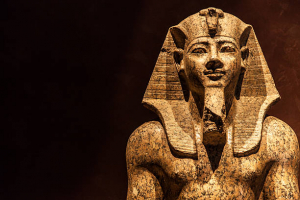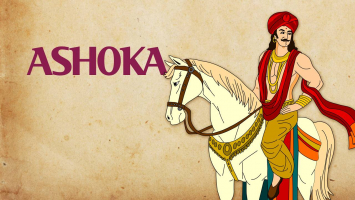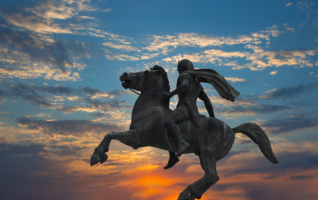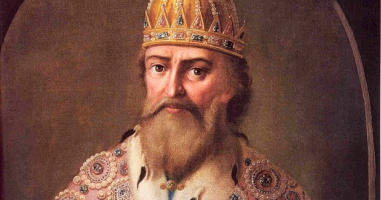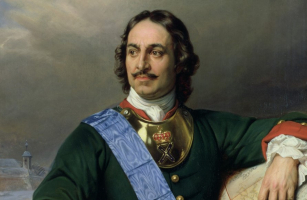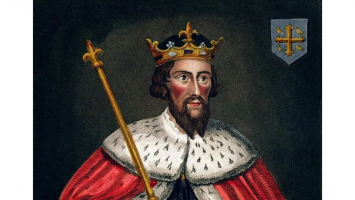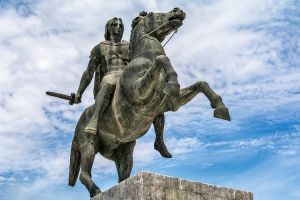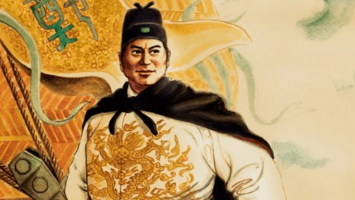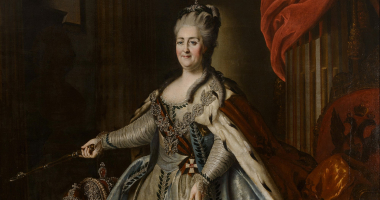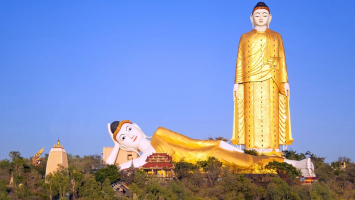Top 8 Great Bodhisattvas in Buddhist Culture
The Eight Great Sons, or the 8 Great Bodhisattvas, represent the eight great ideals of the Mahayana Path. They are essential to the Buddhist Great Vehicle ... read more...Path, which promotes wisdom and compassion for all beings. Older paintings most frequently depict the Eight Great Bodhisattvas surrounding the Buddha, representing the Eight Great Qualities of Shakyamuni Buddha. Toplist'll give a summary of the eight greatest bodhisattvas in Buddhist cultures in this section.
-
Avalokiteśvara, also known as Guanyin (Chinese) or Kannon (Japanese), is the most renowned deity in Mahayana Buddhism. Avalokiteśvara is the Bodhisattva of Infinite Compassion and Mercy in Mahayana Buddhism.
Avalokiteśvara, often depicted as a compassionate figure, embodies qualities of active sympathy, compassion, and soft attachment. Translated as "The Lord Who Looks Down in Pity" or "The One Who Hears the Cries of the World," Avalokiteśvara represents the embodiment of compassion and mercy. Avalokiteśvara is not an ordinary Bodhisattva. In the past, when he became a Buddha, he was called "True Dharma Minh Tathagata".Avalokiteśvara serves as both a companion and an earthly form of Amitabha, the Buddha of Infinite Light. During the transitional period between the historical Buddha Gautama and the future Buddha Maitreya, Avalokiteśvara watches over the world, representing Amitabha's power and influence. Additionally, Avalokiteśvara is credited with the creation of the actual living universe, the fourth world.
Avalokiteśvara can be represented as male, female, or genderless in various works of art. The most popular image is the embodiment of a woman, holding a vase of willows and using holy water peels to relieve the suffering of sentient beings. In Pure Land Buddhism, Avalokiteśvara, along with Amitabha and Mahāsthāmaprāpta, forms a ruling triumvirate for practitioners. In Tibetan Buddhism, Avalokiteśvara is known as Chenrezig, and there is a belief that the Dalai Lama is an incarnation of Avalokiteśvara.
Avalokiteśvara, the compassionate Bodhisattva, holds immense significance in Mahayana Buddhism. Known by different names across various cultures, Avalokiteśvara symbolizes compassion, actively sympathizes with others, and demonstrates infinite mercy. Exploring the symbolism and role of Avalokiteśvara offers a deeper understanding of this revered deity in Buddhist traditions.
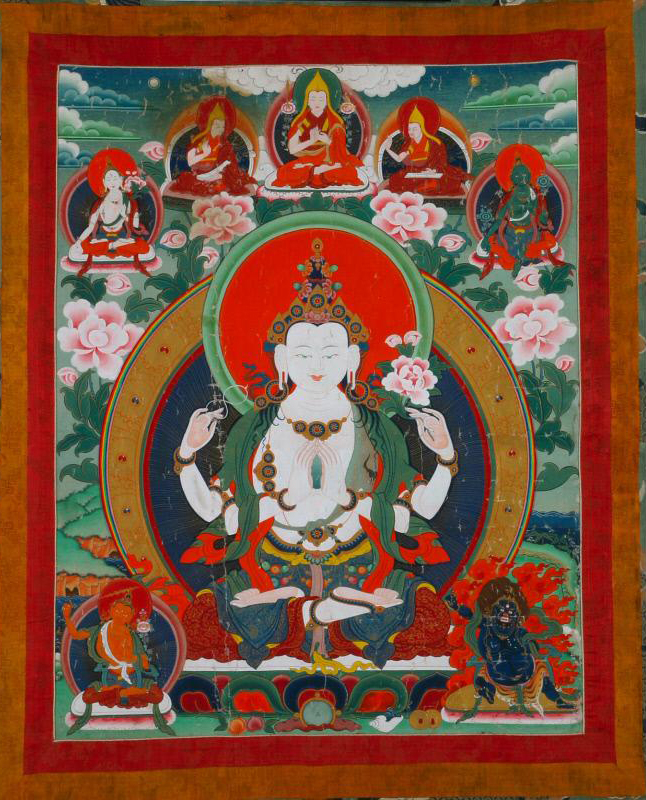
The bodhisattva Avalokiteshvara, 1800–1900. Tibet. Thangka; colors on cotton. Courtesy of the Asian Art Museum, Gift of the Friends of Richard Davis, 1988.34. Free Buddhist Audio -
Vajrapani is The Mighty Bodhisattva of Transformation and Protection. Vajrapani, an important bodhisattva in Mahayana Buddhism, symbolizes the might and defense of the Buddha.
Vajrapani is considered one of the first bodhisattvas and serves as the defender and advisor to the Buddha. Alongside Manjusri and Avalokitesvara, Vajrapani represents the virtues of wisdom, compassion, and might, respectively. This trio signifies essential aspects of the Buddha's teachings. Vajrapani is revered in Tibetan Buddhism, Pure Land Buddhism, and even early Zen Buddhism, where he is known as Mahāsthāmaprāpta.
Vajrapani is often depicted in a dynamic dance surrounded by flames, symbolizing transformation. His outstretched right arm holds a vajra pestle and deftly holds a parasol – which He uses to bind demons. He wears a skull crown with his hair standing up from the roots. Despite his angry appearance, Vajrapani symbolizes the enlightened mind, free from anger and full of wisdom.
Vajrapani's mantra, "Om Hm Vajrapani," highlights his association as the "wielder of the thunderbolt." This mantra harnesses the unstoppable energy that Vajrapani represents. While chanting the mantra, familiarity with Vajrapani enhances the energizing effects.
Vajrapani, the Mighty Bodhisattva of Transformation and Protection, holds a significant role in Mahayana Buddhism. As the defender and advisor to the Buddha, Vajrapani symbolizes might and the power to cut through illusions. Exploring the symbolism and spiritual practices associated with Vajrapani provides a deeper understanding of this revered bodhisattva in Buddhist traditions.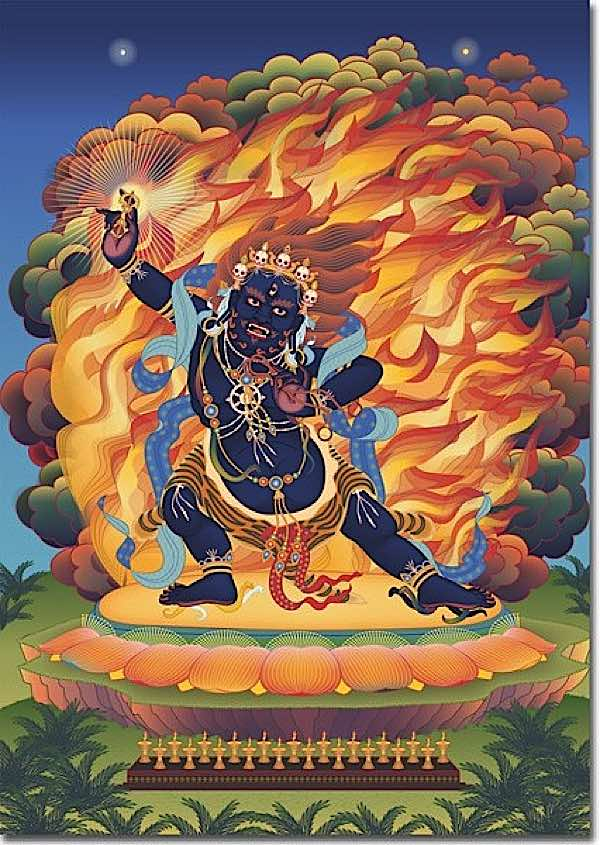
Wrathful Vajrapani surrounded by wisdom flames. In both wrathful and peaceful forms he is irresistibly powerful. - buddhaweekly.com 
Vajrapani - Wikipedia -
Among 8 Great Bodhisattvas in Buddhist Culture, Mañjuśrī is one of the four great Bodhisattvas of Buddhism and The Bodhisattva of Wisdom and Consciousness. Mañjuśrī, also known as Mãnjughoṣa, Vāgīśvara, Wen-shu Shih-li, Monju, and Jam-dpal, holds a prominent role in Buddhist beliefs. Mañjuśrī and Samantabhadra are two bodhisattvas standing in front of Shakyamuni Buddha, commonly known in the world as the Three Saints Flower Adornment, representing the Buddha's wisdom. Let's explore the symbolism and significance of Mañjuśrī across different cultures.
Mañjuśrī, derived from Sanskrit, translates to "He Who Is Noble and Gentle." In Hindu traditions, Mañjuśrī is associated with qualities such as sweetness, splendor, and lordship of speech. Known by various names in different regions, including China, Japan, and Tibet, Mañjuśrī signifies wisdom and consciousness. This Bodhisattva attained Buddhahood a long time ago, his name is Dragon Race Upper Tathagata, and his life span is four hundred and forty thousand years.Depicted as a youthful figure, Mañjuśrī symbolizes innocence and purity in Buddhist art. Often portrayed holding a vajra sword, he pierces through ignorance and discrimination. Another common attribute is a sutra scroll, representing the Prajnaparamita (perfection of wisdom) writings. In some representations, Mañjuśrī is seen resting on a lotus or riding a lion, symbolizing courage and majesty. Traditional paintings depict his skin color as yellow.
While Manjushri was mentioned in Buddhist sutras as early as AD 250, artistic depictions of him emerged around AD 400. In the eighth century, his cult gained significant popularity in China, leading to the construction of numerous temples on Mount Wu-t'ai in Shansi province. Although considered a celestial Bodhisattva, certain traditions attribute a human past to Mañjuśrī, associating him with various historical figures, including Atīśa, the Tibetan reformer, Chinese emperors, and the monk Vairocana.
Mañjuśrī, the Bodhisattva of Wisdom, plays a vital role in Buddhist traditions across different cultures. Revered for his insight and understanding, Mañjuśrī symbolizes the transcendence of duality and the pursuit of wisdom. Exploring the symbolism and significance of Mañjuśrī provides a deeper understanding of this revered deity in Buddhist philosophy and art.
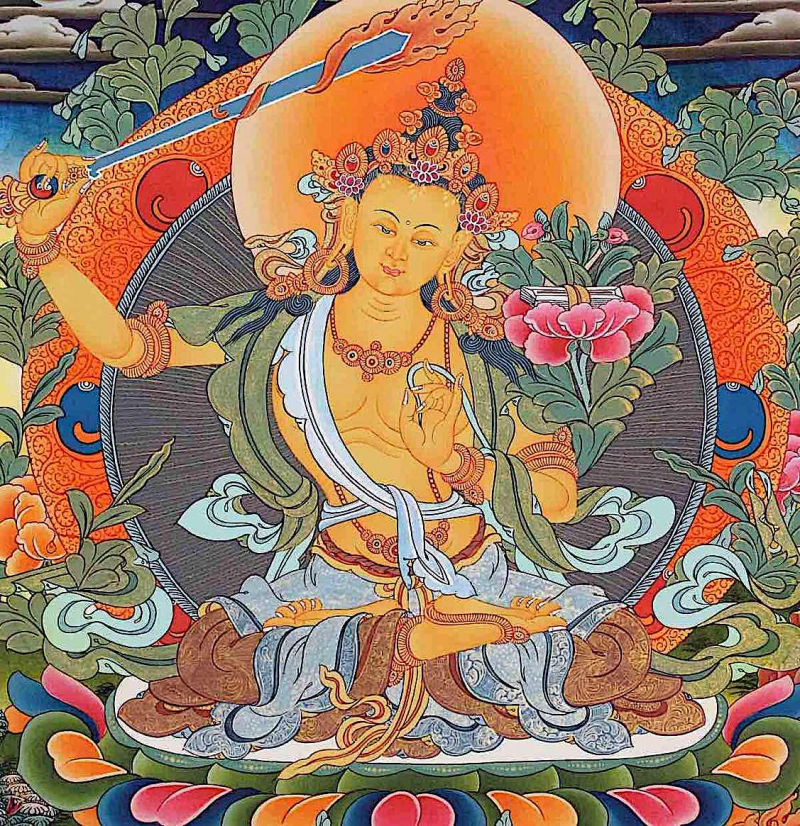
Orange Manjushri with his sword of wisdom that “cuts through delusions.” - buddhaweekly.com 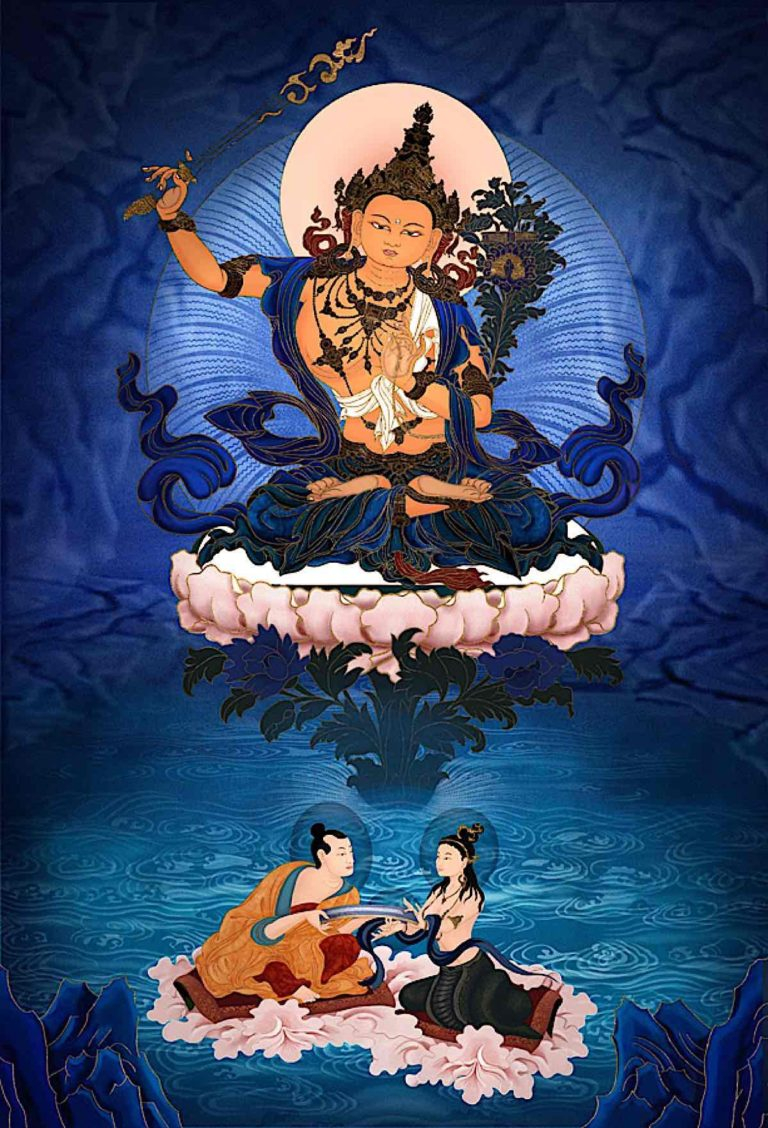
A beautiful thangka of Lord Manjushri by Jampay Dorje. - buddhaweekly.com -
Samantabhadra is The Bodhisattva of Universal Virtue and Meditation. Samantabhadra, a principal Bodhisattva in Mahayana Buddhism, holds significance in Buddhist practice and meditation. The symbolism and representations of Samantabhadra across Buddhist traditions are different.
Samantabhadra translates as "Universal Virtue," "Universal Worthy," or "He Who Is All-Pervadingly Good." Samantabhadra is an enlightened Bodhisattva who has the power to manifest in the ten directions of the world. Also known as Fugen in Japan and P'u-hsein in China, Samantabhadra is associated with protecting those who teach Dharma. In Buddhist tradition, Samantabhadra is often depicted alongside Shakyamuni Buddha and the Bodhisattva Mañjuśrī, forming the Shakyamuni Trinity.
Samantabhadra is portrayed as a grandeur-clad Bodhisattva rides an elephant with six tusks. The six tusks represent the six senses or occasionally the six sense organs. In the Nyingma School of Tibetan Buddhism, Samantabhadra is regarded as the primordial Buddha. Symbolically, Samantabhadra carries a lotus leaf "Parasol" and is associated with virtues such as charity, morality, patience, labor, reflection, and wisdom.
Samantabhadra is sometimes depicted alone, but is considered the counterpart of the Bodhisattva Manjushri. They are often seen together in the Shakyamuni Trinity, where Samantabhadra rides an elephant and holds symbols like a lotus leaf, sword, or wish-fulfilling jewel. In Chinese art, Samantabhadra may exhibit feminine traits and attire similar to Kuan Yin. Samantabhadra is particularly revered in China, notably on Mount Emei, which is associated with the Bodhimanda of Samantabhadra.
In Vajrayana or Esoteric Buddhism, as well as several Tibetan Buddhist schools, Samantabhadra is revered as a Buddha rather than a Bodhisattva. In these lineages, Samantabhadra is regarded as the primal Buddha, representing the unity of awareness and emptiness, appearances and emptiness, and the compassionate nature of mind. It can be said that Samantabhadra is one of the most effective Bodhisattvas in teaching and has a profound predestined relationship with all sentient beings.
Samantabhadra, the Universal Virtue Bodhisattva, holds a significant place in Mahayana Buddhism. Representing goodness, virtue, and the unity of awareness and compassion, Samantabhadra is revered across various Buddhist traditions.
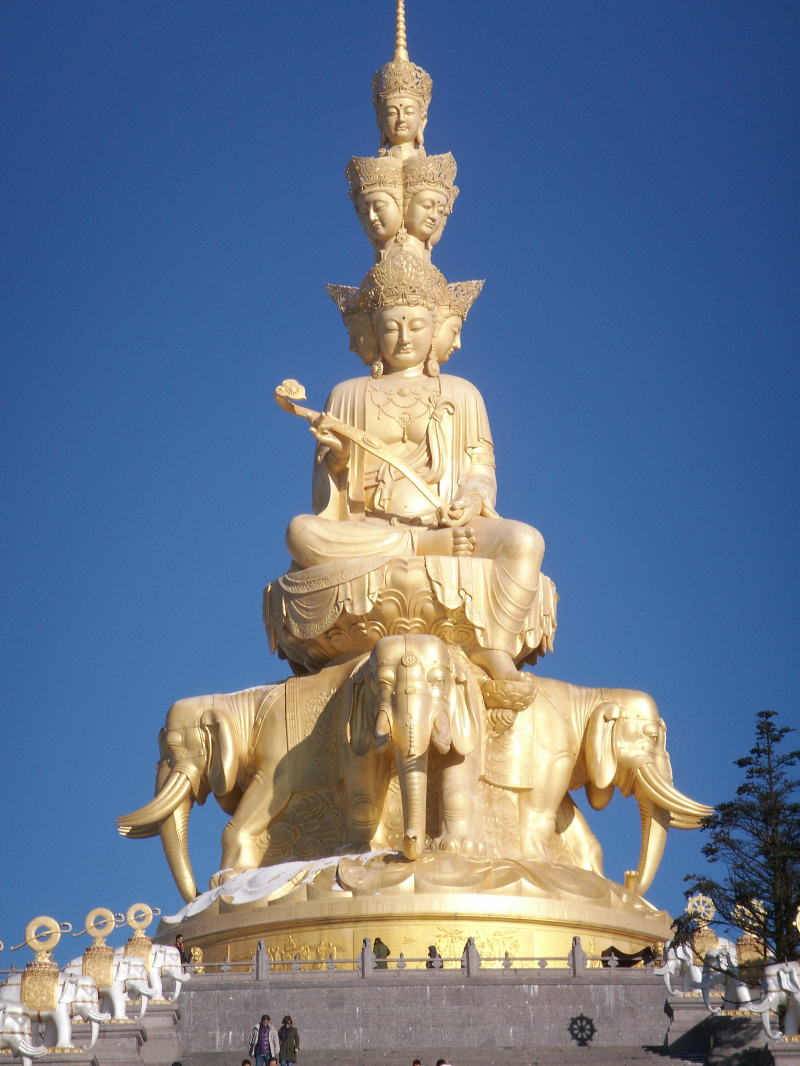
Samantabhadra (Bodhisattva) - Wikipedia 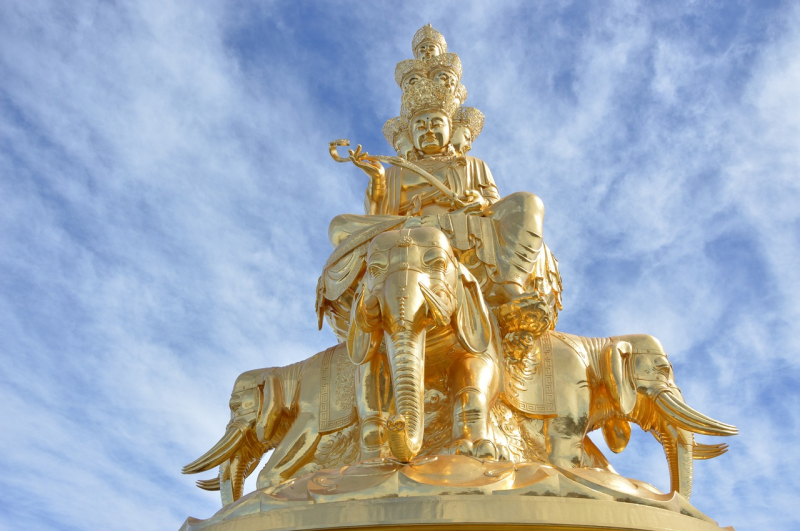
Image by April123_ from Pixabay -
Kṣitigarbha is The Compassionate Bodhisattva of the Underworld. Kshitigarbha, also known as Dicang in China and Jizō in Japan, is a revered bodhisattva associated with salvation and compassion.
Kṣitigarbha, meaning "Womb of the Earth," is a bodhisattva recognized in India from the 4th century CE. However, he gained immense popularity in China as Dicang and in Japan as Jizō. Regarded as the savior of the oppressed and dying, Kṣitigarbha has made a vow to rescue all souls condemned to hell, including those experiencing wicked dreams.
According to Buddhist scriptures, he is a Bodhisattva who embodies in the Six Paths (six paths including: Hell, Pretas, Animal, Asura, Human World, Heavenly, which are the six paths of reincarnation of sentient beings) to save sentient beings from heaven to hell. Countless kalpas ago, Kṣitigarbha was a Brahmin and made a vow before a Buddha at that time to be determined to cultivate and attain Buddhahood, but will refuse this Buddhahood if it has not saved all sentient beings from Samsara.
In China, Kṣitigarbha is considered the overlord of hell and invoked when someone is near death. In Japan, as Jizō, he is revered for his merciful assistance to the departed, particularly comforting deceased infants and aborted fetuses. The widespread popularity of Kṣitigarbha is evident in the presence of his imagery on temple banners in regions like Chinese Turkistan.
Kṣitigarbha is often portrayed as a shaven-headed monk with a nimbus and an urna (tuft of hair) between his brows. He is depicted holding a clerical staff (khakkara) to open the gates of hell and a fiery pearl (chintamani) to illuminate the darkness. Notably, Kṣitigarbhahas the ability to manifest himself in various forms, aligning with the needs of those who are suffering. In Japan, he is depicted in six forms, corresponding to the six realms of desire.
Kṣitigarbha, the Compassionate Bodhisattva of the Underworld, holds a significant place in various Buddhist traditions. Revered for his role in salvaging souls and providing mercy, Kṣitigarbha is widely venerated in China as Dicang and in Japan as Jizō.
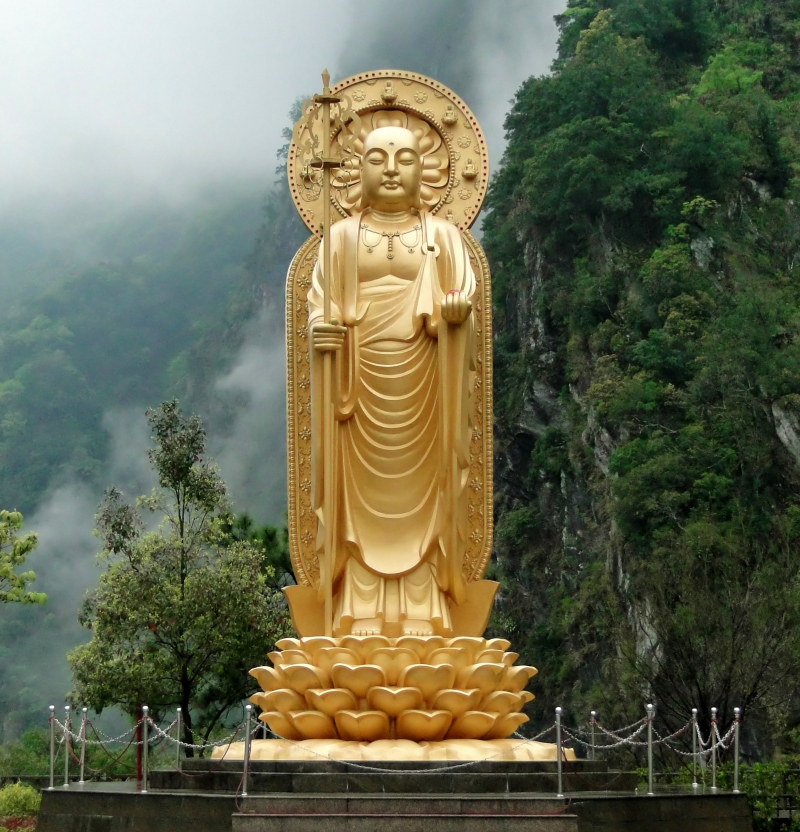
Photo on Wikimedia Commons (https://upload.wikimedia.org/wikipedia/commons/1/15/Earth_Store_Bodhisattva.jpg) 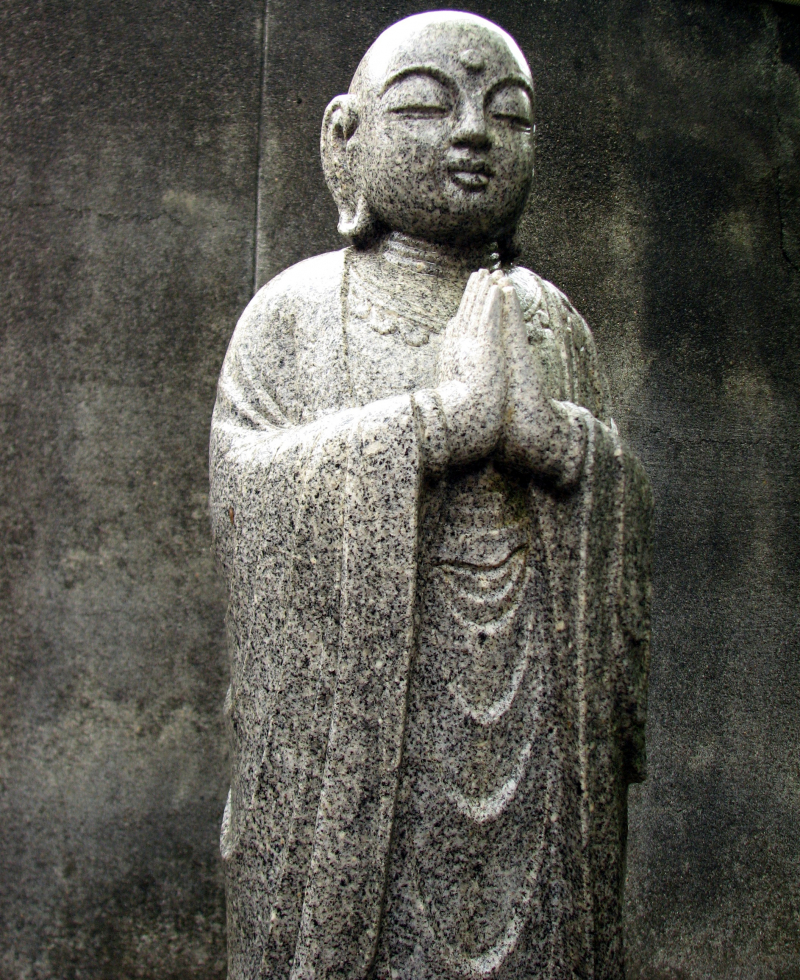
Photo on Wikimedia Commons (https://upload.wikimedia.org/wikipedia/commons/a/a5/Ksitigarbha_Statue_at_Shakuzouji_Temple.jpg) -
Maitreya derives its name from the Sanskrit word "maitrī," meaning "kindness." Known by various names such as Metteyya, Milefo, Miroku, Maidari, and Byams-pa, Maitreya Buddha symbolizes benevolence and love in different cultural contexts.
Between the fourth and seventh centuries, Maitreya Buddha gained widespread devotion, leading to his representations across the Buddhist world. Artworks beautifully capture his sense of anticipation and promise. He is depicted sitting on a European-style chair or casually crossed ankles in painting and sculpture.
Maitreya Buddha is regarded as the future Buddha according to Buddhist eschatology. Believed to appear in the current Kalpa era, Maitreya Buddha is considered the fifth Buddha who will manifest in the future. Buddhist texts, such as the Amitabha Sutra and the Lotus Sutra, refer to Maitreya Buddha as Ajita.
According to Buddhist history and tradition, Maitreya Buddha is seen as a Bodhisattva who will manifest on Earth in the future, attain Nirvana, and impart the pure Dharma to humanity, similar to Shakyamuni Buddha. The prophecy of Maitreya Buddha returning to the physical world is mentioned in various Buddhist writings and scriptures, widely recognized in many Buddhist nations.
Maitreya Buddha statues and images display a variety of features, hand mudras, and poses. The statues exhibit the qualities of a Bodhisattva, often showing the Maitreya Buddha in the Dharmachakra Mudra with lotus flowers held in each hand. The ritual base and Wheel of Dharma are also depicted, emphasizing Maitreya Buddha's mission to disseminate the Dharma to all sentient beings.
In Chinese Buddhism, the Laughing Buddha is considered an embodiment of Maitreya Buddha. The Laughing Buddha, often depicted with a jovial expression and a chubby tummy, is associated with Maitreya Buddha's future manifestation and is widely recognized worldwide.
Maitreya Buddha, the future Buddha of kindness and compassion, holds a significant place in Buddhist traditions. Revered for his future role in spreading the Dharma, Maitreya Buddha symbolizes benevolence and love. Understanding the symbolism and anticipation surrounding Maitreya Buddha provides insights into Buddhist eschatology and the belief in a compassionate future.
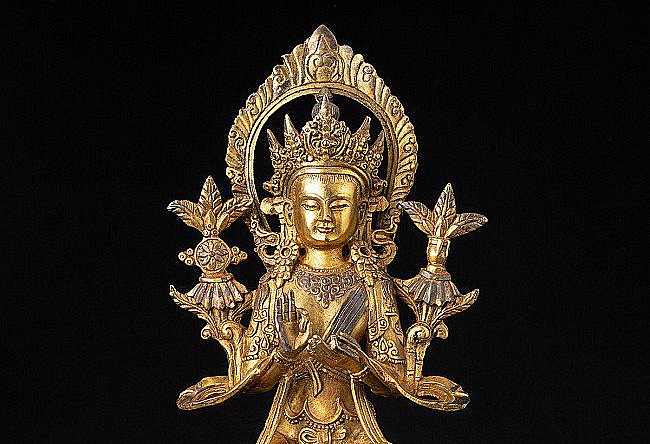
originalbuddhas.com 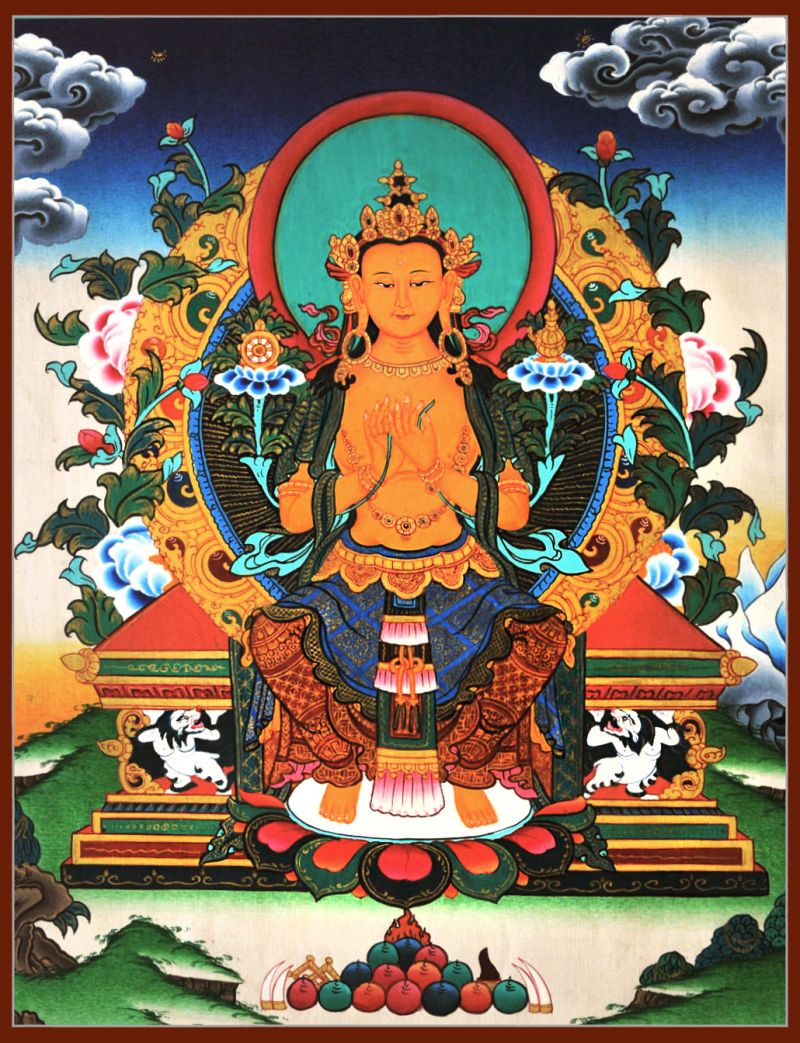
Maitreya Buddha - Thangka Paintings -
Sarvanivāraṇaviṣkambhin is The Cleansing and Empowering Bodhisattva. Sarvanivāraṇaviṣkambhin is a well-known Bodhisattva mentioned in the Guna Karandavyuha sutra, revered for his ability to cleanse followers of their sins. Sarvanivāraṇaviṣkambhin is a symbol of light, eliminate the afflictions, karma, birth and death of sentient beings. Knowing the obstacles of all, saving the sufferings of sentient beings, reaching the realm of liberation.
Sarvanivāraṇaviṣkambhin is depicted in blue or white attire and is associated with purifying actions. He performs the Bhumisparsa Mudra (left hand) and the Santikaran Mudra (right hand), forming a loop with the thumb and index finger. Sarvanivāraṇaviṣkambhin wields a sword in his right hand and carries a flag with a Visvavajra (double vajra) in his left.
In the Guna Karandavyuha sutra, it is mentioned that during Buddha Shakyamuni's discourse preparation, he entered an ecstatic Samadhi is known as Sarvasansodhana, purifying everything. Bodhisattva Sarvanivāraṇaviṣkambhin was present and questioned Buddha Shakyamuni about the golden rays of light illuminating the province. Buddha Shakyamuni explained that the rays were purifying sinners in Avichi Hell and taming the ignorant and evil-doers. Further discourses on Avalokiteshvara's grandeur and humanitarian deeds were given at the request of Bodhisattva Sarvanivāraṇaviṣkambhin.
In the Swayambhu tradition, the Great Odiayana Acharya of Kapilavastu engaged in meditation and performed a fire Puja (Yajna) with live fish as a sacrifice. Bodhisattva Sarvanivāraṇaviṣkambhin intervened, realizing that the act was non-virtuous due to ignorance, and granted Odiayana Acharya eight amazing powers. Following the instructions of Bodhisattva Sarvanivāraṇaviṣkambhin, Odiayana Acharya continued his spiritual practices and revered a precious boulder believed to be an emanation of Bodhisattva Sarvanivāraṇaviṣkambhin.
SarSarvanivāraṇaviṣkambhinn, the Cleansing and Empowering Bodhisattva, holds a significant place in Buddhist traditions. Revered for his ability to purify and empower practitioners, Sarvanivāraṇaviṣkambhin's depictions and narratives symbolize the transformative nature of Buddhist practice.
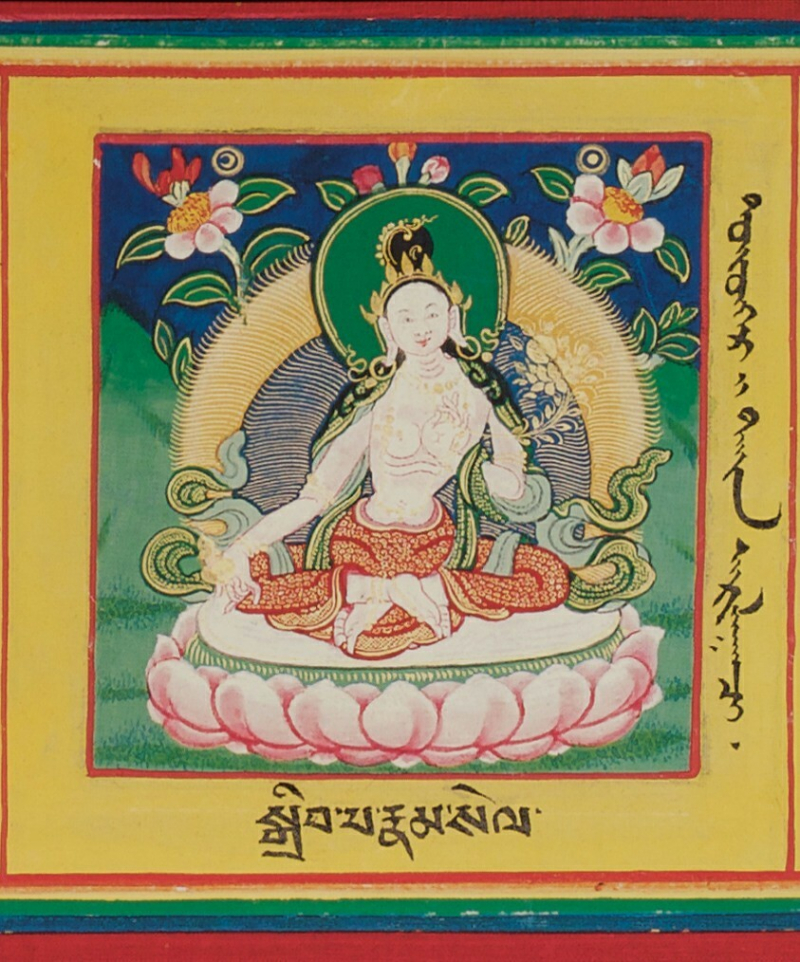
Photo on Wikipedia (https://upload.wikimedia.org/wikipedia/commons/e/eb/Nivaranavishkambhin_-_%28Bodhisattva%29.jpg) 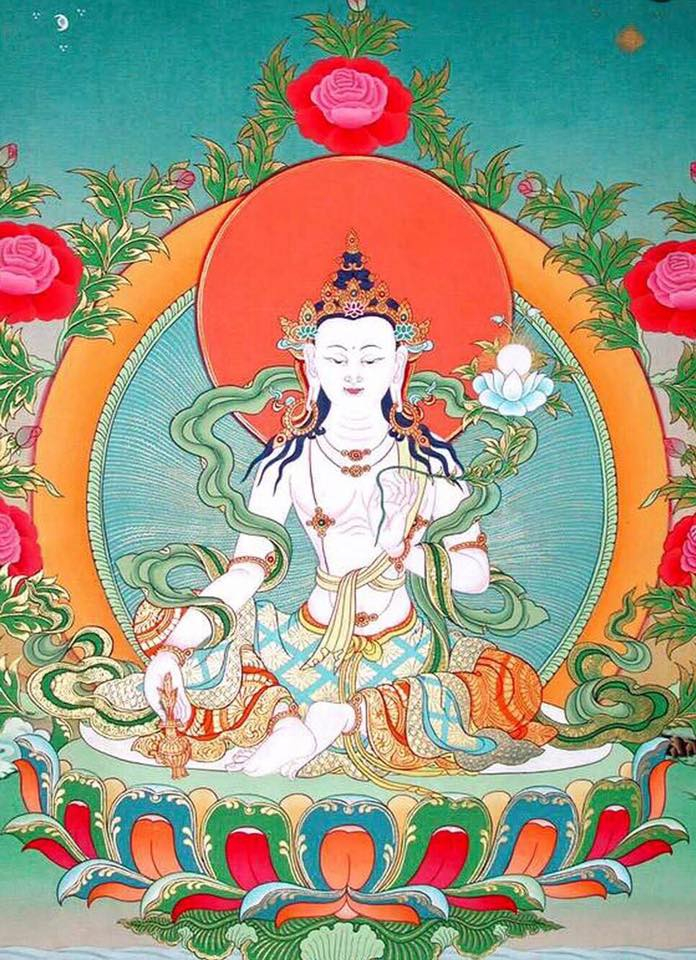
SARVA NIRVARANA VISKAMBHIN -
Another one of the Eight Great Bodhisattvas is Ākāśagarbha. Ākāśagarbha is renowned for wisdom and the ability to purify transgressions.
The name "Ākāśagarbha," which can be translated as "void store," "nucleus of space," or "boundless space treasury," expresses how his wisdom is limitless like space. The "Earth store" bodhisattva Ksitgarbha is known as the twin brother of Kagarbha, just as their names suggest.
The typical representation of Ākāśagarbha features either blue or green skin, a halo around his head, and elaborate robes. He frequently makes an appearance in a serene meditation position, either standing serenely on a fish in the middle of the ocean or sitting cross-legged on a lotus flower. He typically carries a sword with him, which he uses to cut through unfavorable feelings.
Ākāśagarbha was instrumental in the establishment of Shingon Buddhism, one of Japan's most important schools of Buddhism. Kukai was a Buddhist monk and scholar who studied with another monk a secret doctrinal method known as Kokuzou-Gumonji.
He had a vision of Ākāśagarbha as he repeatedly chanted a mantra of Ākāśagarbha. The bodhisattva advised him to go to China and study the Mahavairocana Abhisambodhi sutra. Kukai traveled to China after his vision to become an expert in esoteric Buddhism. Following this, he established Shingon Buddhism, also known as the "true word" school. Ākāśagarbha is a particularly important figure in Shingon Buddhism due to his role in the school's founding.
Namo akasagarbhaya om arya kamari mauli svaha, the mantra of Ākāśagarbha is believed to give rise to wisdom and creativity, and dispel ignorance. In Shingon Buddhism in China, mantras containing the name of Ākāśagarbha are especially common. Buddhists chant the mantra to dispel ignorance and advance understanding and insight. It's also thought that repeating his mantra fosters creativity. Buddhists may wear a piece of paper with the mantra written on it in addition to reciting it in order to increase their wisdom or creativity.
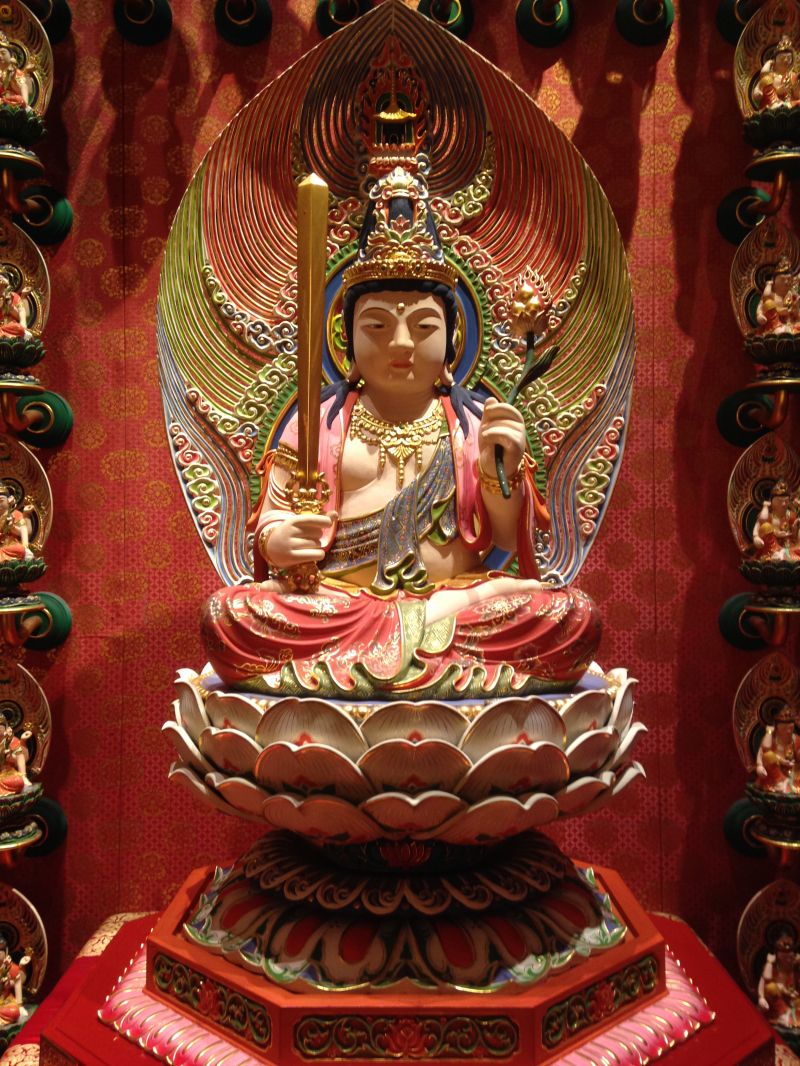
Photo on Wikimedia Commons (https://upload.wikimedia.org/wikipedia/commons/8/8b/Akasagarbha_at_Buddha_Tooth_Relic_Temple_and_Museum.JPG) 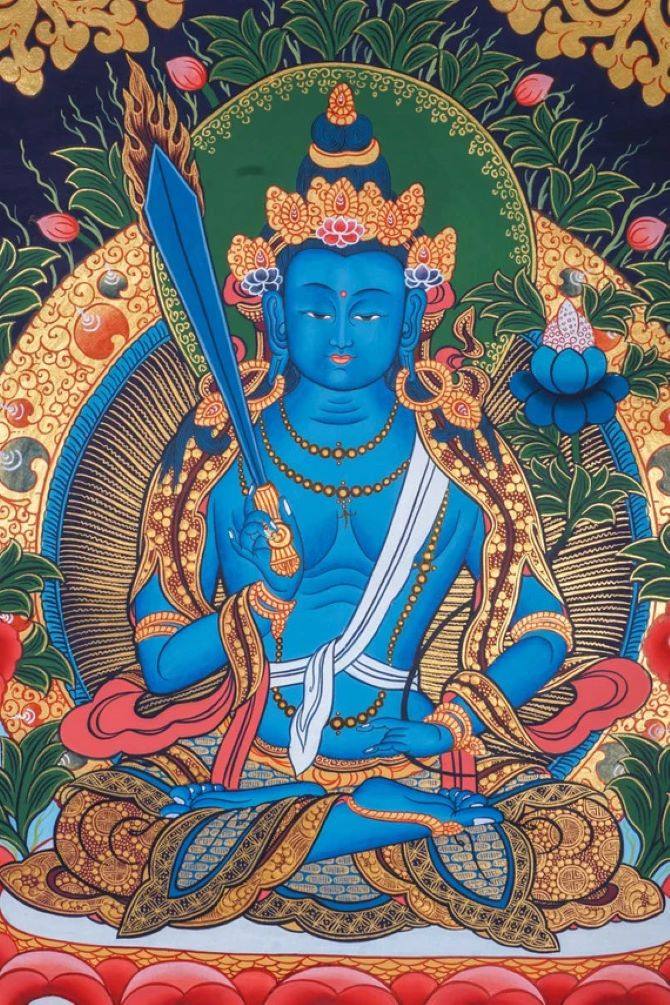
Screenshot of https://i.etsystatic.com/20276551/r/il/fe28d6/4010392233/il_570xN.4010392233_3z3t.jpg










